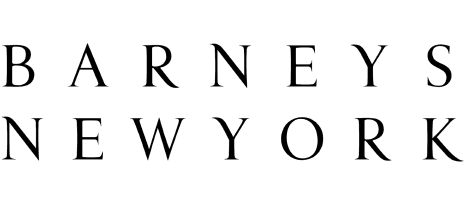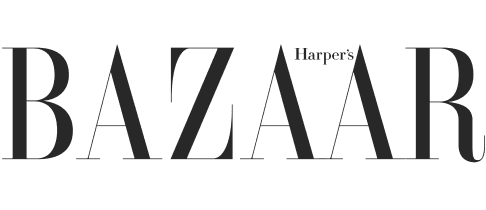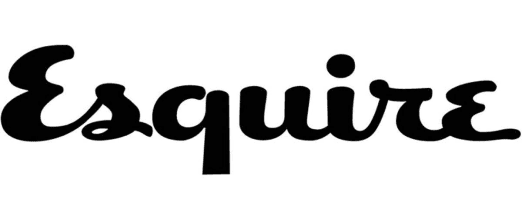Your cart is empty
Azores Advanced Coastal Cruising (106)
American Sailing Association
ADVANCED COASTAL CRUISING 106
With the island of Sau Miguel off your stern, wind pushes and waves carry - westward you move towards the the western cluster of the archipelago. The 92 nautical mile passage between islands where you learn the motion of sailing at sea - you, your instructor, and fellow sailors push onward observing the instruments, prudently navigating through extremes of the seas. Days continue while the logbook gets longer, each moment a crossroads of learning new material as we vigorously sail across the archipelago. Finally, we turn eastward with our bow facing our home port. A journey that continues beating up wind in syncranisy with our beating hearts. This course is unlike other course, you'll learn the course work, but what you'll experience will go much deeper..
SAILING SCHOOL CERTIFICATIONS
Advanced Coastal Cruising Certification (ASA 106)
Start & Finish: Sau Miguel Island Airport: Ponta Delgada–João Paulo
Itinerary
DAY 1 | SAIL TO VILA FRANCA DO CAMPO (SAO MIGUEL ISLAND), 12 MILES AND VISIT VILA FRANCA DO CAMPO
Get yourself in the right mood with a brief coastal trip of 2/3 hours to the first capital of São Miguel, the historic city of Vila Franca do Campo, with its old buildings and manor houses, a lively charm remembrance of the early settlement days. If you have time, don’t lose the opportunity of visiting Furnas, a thermal paradise lost in one of the world’s most exuberant green hidden gems. Must visit: Terra Nostra Garden; Vila Franca do Campo.
DAY 2 | SAIL TO VILA DO PORTO (SANTA MARIA ISLAND), 54 MILES
Enjoy a full day of sailing and cross your fingers for an amazing ride shared, for sure, with dolphins and, perhaps, turtles and whales! You won’t be the first lucky one.
DAYS 3/4 | VISIT SANTA MARIA ISLAND AND SAIL TO ANGRA DO HEROÍSMO (TERCEIRA ISLAND), 145 MILES
Santa Maria is the only non-completely volcanic island and enjoy the title “Sun Island”, given by a prevailing warm and dry climate. Visit Barreiro da Faneca, also known as “red desert” because of its scarlet clays formed by pyroclastic rocks and say Wow! When visiting São Lourenço Bay, one of the most beautiful bays in the archipelago with it is cliff side vineyards, typical houses and agricultural plots. Say goodbye to Santa Maria Island and set sails to Terceira Island. Must visit: Vila do Porto; São Lourenço Bay.
DAY 5 | VISIT TERCEIRA ISLAND
Once in Angra do Heroismo, get yourself lost in the immaculate and well preserved streets of one of the most historical cities of Portugal and a UNESCO World Heritage site. Still, Terceira does not end in the unique charm of Angra. You must drive along the green leaves of a truly stunning landscape towards Algar do Carvão lava tube, with its magnificent stalagmites, stalactites and a lake.
DAY 6 | SAIL TO PRAIA DA GRACIOSA (GRACIOSA ISLAND), 45 MILES AND VISIT GRACIOSA ISLAND
Classified by UNESCO as a Biosphere Reserve, the island of Graciosa is the second smallest of the archipelago and is ranked as an exceptional location for diving and fishing. The charming town of Santa Cruz with its typical windmills provides a unique glance. Caldeira da Graciosa and Furna do Enxofre, a splendid volcanic cave, are the most iconic natural attractions of the island. Must visit: Town of Santa Cruz; Caldeira da Graciosa; Furna do Enxofre.
DAY 7 | SAIL TO VELAS (SAO JORGE ISLAND), 38 MILES
Another sailing day, another opportunity to observe and enjoy the presence of natural treasures like dolphins, turtles and, luckily, whales.
DAY 8 | VISIT SÃO JORGE ISLAND
Start discovering São Jorge Island by visiting the town of Calheta and cross the thin (8 km) but steep island (300 m) to visit some of its more fabulous fajas (low tongues of lava at the bottom of steep volcanic cliffs), Cubres, Ouvidor and, especially, Santo Cristo, a unique natural lagoon ring-shaped, that is now becoming a surfing sanctuary. Must visit: Town of Calheta; Fajã dos Cubres, Fajã do Ouvidor and Fajã de Santo Cristo.
DAY 9 | SAIL TO HORTA (FAIAL ISLAND), 22 MILES
Arrive at Horta Marina and get yourself a well-deserved night on board, along a mythical Gin at Peter’s Café Sport to celebrate with your crew your sailing charter discovering the wonders of the Azores.
DAY 10 | VISIT FAIAL ISLAND
Don’t forget, Faial is not only about yachts, the Marina and Horta. Don’t forget to admire the Caldeira Volcano, a deep crater of 2000 X 400 meters and Capelinhos Volcano, an almost lunar and arid landscape of 3 square km conquered to the sea by more than 300 explosions and earthquakes in 1957 e 1958. Must visit: Caldeira and Capelinhos Volcanos.
DAY 11 | SAIL TO LAJES DO PICO (PICO ISLAND), 21 MILES
Enjoy another full day of sailing and admire the natural beauty of Pico’s rough south coast before entering the birthplace of the Azorean once legendary whale industry, Lajes do Pico. Start visiting Pico Island from the heart of its ancient whaling culture, visiting the Whalemen’s Museum at Lajes do Pico.
DAY 12 | VISIT PICO ISLAND
Organize yourself. One day to visit Pico is the least you can do. Start contouring the island along its coastline towards the unique Landscape of the Pico Island Vineyard Culture, a UNESCO World Heritage Site. Continue through the coastline and you will be amazed by the roughness of its magma setting. Once in São Roque do Pico visit the Whaling Industry Museum and start climbing the mountain back to Lajes do Pico, stopping at the altitude lagoons of Capitão and Caiado. Must visit: Landscape of the Pico Island Vineyard Culture; Whaling Industry Museum at São Roque do Pico; Capitão and Caiado Lagoons.
DAY 13 | SAIL BACK TO PONTA DELGADA (SÃO MIGUEL ISLAND), 130 MILES
Arrive at Ponta Delgada Marina and get yourself a well-deserved last night on board, along a drink at “Portas do Mar” area to celebrate two full weeks of sailing while travelling and discovering the wonderful Azores. But don’t forget, São Miguel is not only about yachts, the Marina and Ponta Delgada. Don’t leave us before admiring its most iconics places: Sete Cidades – a twin lake crossed by legends and myths – and Fogo, with its stunning views. Must visit: Sete Cidades Lake; Fogo Lake.
Crew
Advanced Coastal Cruising ASA 106
PREREQUISITES
101 Keelboat Sailing
103 Coastal Cruising
104 Bareboat Cruising
105 Coastal Navigation
STUDY MATERIALS
Coastal Navigation & Piloting (Tursi)
Coastal Navigation Manual (Pyzel)
USCG Navigation Rules & Regulations Handbook
U.S Chart No. 1
USCG Light List
Local Notice to Mariners
ASA 106, Advanced Coastal Cruising
KNOWLEDGE
1] Explain the chart symbols and conventions on U.S. nautical charts in accordance with the terminology of Chart #1. 2] Identify a source of official U.S. Coast Guard navigation publications.
3] List the publications required for prudent navigation in the local area including:
Large scale charts of the area and Chart #1 • Federal Requirements for Recreational Boats • USCG Navigation Rules and Regulations Handbook • State small vessel regulations • Local rules and regulations, if applicable • Local cruising guides • Tide and current tables, (paper or electronic) ª List of lights, buoys, and fog signals
4] Describe the instruments required for prudent navigation in the local area including the following minimum requirements:
Steering compass and deviation table • Handbearing compass and / or pelorus • Binoculars • Protractor or parallel rule • Depth sounder or leadline • Pencil, eraser, and notebook • Dividers • Watch or clock • Log / Knotmeter
5] Describe the purpose and example contents of a “Notice to Mariners.” 6] Explain the terms and characteristics used for lighted navigation aids. 7] Explain the significance of shapes, colors, and lights used in the U.S. Aids to Navigation (ATON) system.
SKILLS
8] Use the tide and current tables to find:
Times and heights of tides at reference and secondary ports. • Direction and rate of current at referenced and secondary stations.
9] Convert courses and bearings between true, magnetic, and compass. 10] Check compass deviation by a transit bearing or other means. 11] Plot a dead reckoning position on a chart using speed, time and course to steer. 12] Allow for the effect of current and leeway to plot the estimated position. 13] Determine a course to steer which takes into account known current and leeway. 14] Determine current given the course steered and speed and two observed positions.
15] Plot a chart position from terrestrial objects using:
Two or more bearings on different objects taken at one time. • Bearings at different times (i.e. a running fix). • One bearing and transit range. • One distance (i.e. a sounding or dipping a light) and one bearing.
16] Chart a course of at least 20 miles and three course changes using the above skills.
FAQ
Where does the course begin and how do I get there?
Ponta Delgada, Sao Miguel Island is the starting location for the course. There are numerous direct flights each week direct to Ponta Delgada from Boston & New York and multiple flights daily from Lisbon.
Is there lodging near the starting marina?
Yes, there are lots of hotels, AirBnBs, and local rentals within walking distance from the marina. Anywhere within Ponta Delgada will be in close proximity of the starting and ending marina.
Do you recommend arriving early?
Absolutely, Sau Miguel is a stunning island and having a day to explore the interior of the island is highly recommended.
What requirements are needed for this course?
You must have completed ASA 101, 103, 104, 105 certifications. You do NOT have to have had 105 Coastal Navigation completed prior to registering for this course. 105 Coastal Navigation can be taken online and in New York City through the Sailing Collective.
Will be have the opportunity to explore the islands?
Absolutely! Each day we will be given the opportunity to go ashore and explore the local town and as a group you will be able to take a field trip inland to experience the unique nature as well.
Boats
Galleries
Stay Updated
For news on upcoming journeys, events and more sign up for our newsletter
© Sailing Collective Travel Co. 2025








